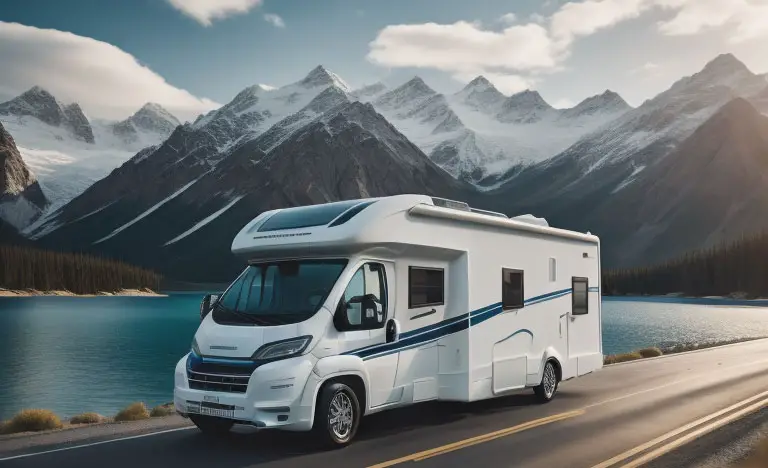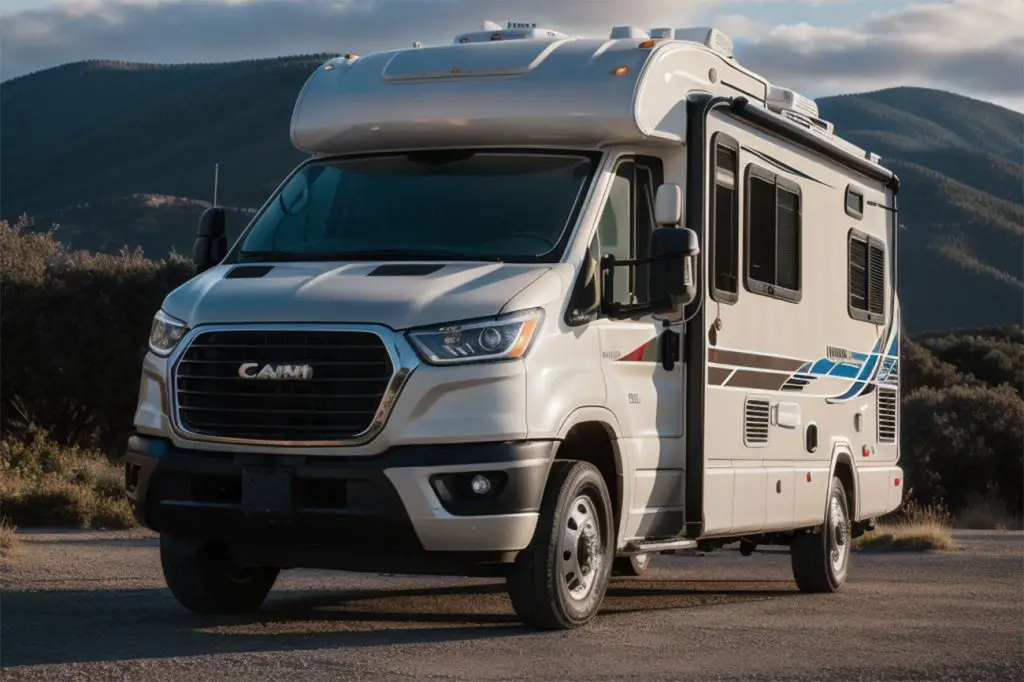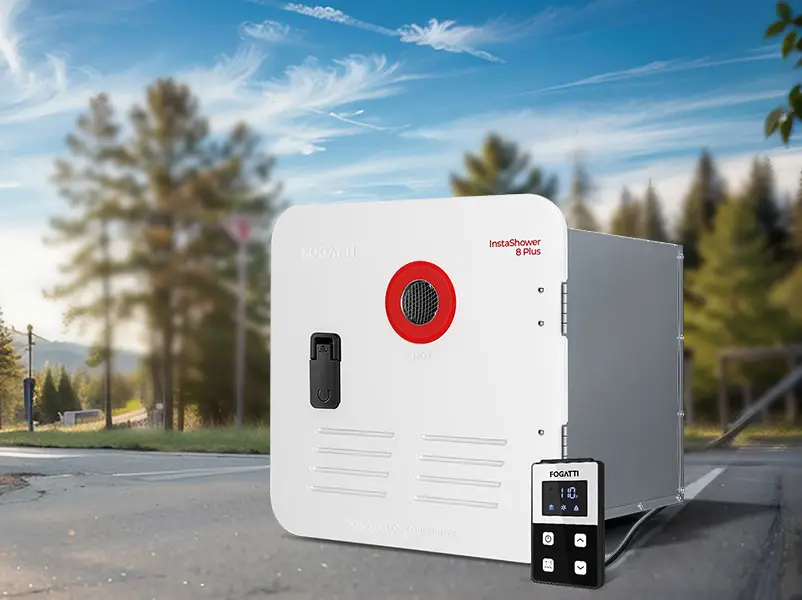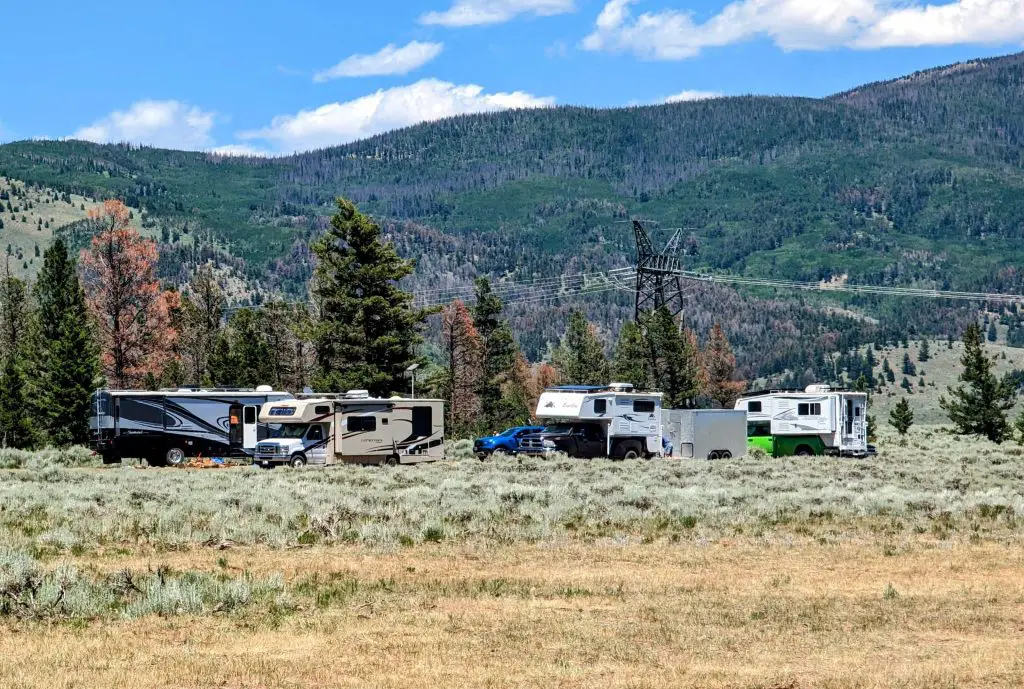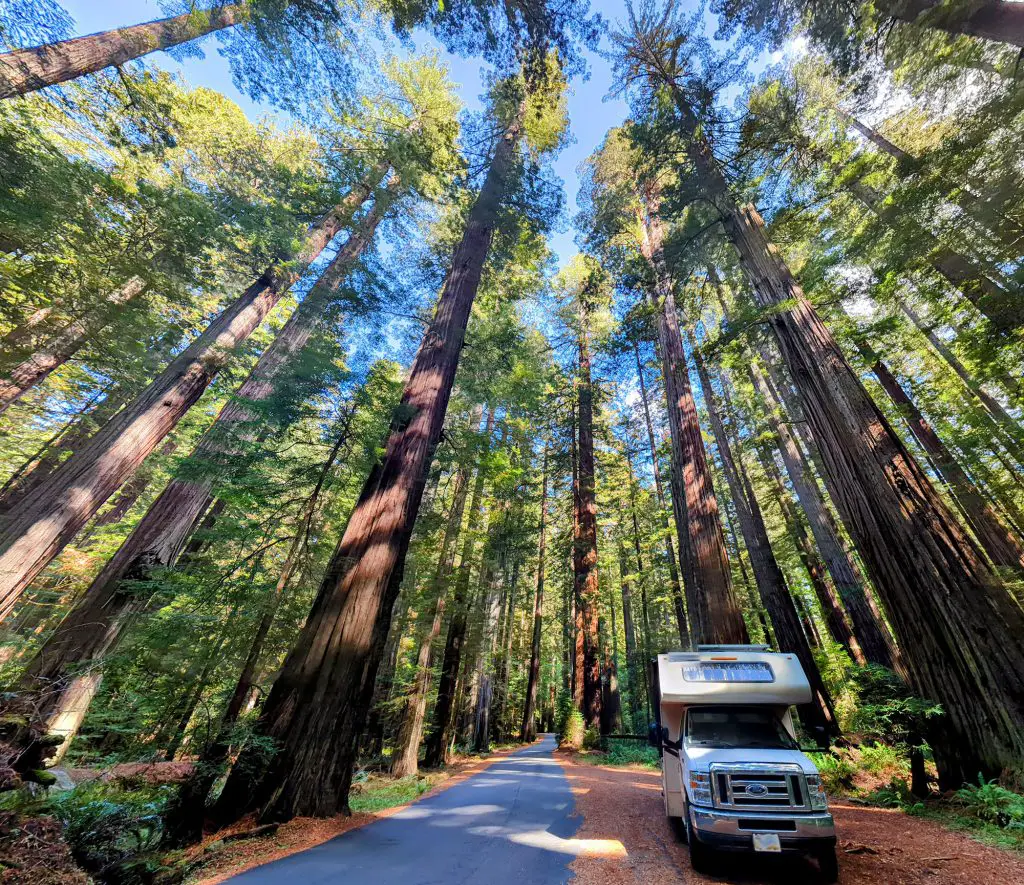Last Updated on February 16, 2024
Key Takeaways:
- Propane is essential for powering various appliances in your RV, including the stove, oven, furnace, and refrigerator. It’s clean-burning, relatively inexpensive, and widely available.
- There are two main types of propane tanks for RVs: ASME tanks, which are permanently mounted on motorhomes, and DOT cylinders, which are portable and used for trailers.
- The amount of propane you’ll need depends on factors like the size of your tank, the number of appliances you’re using, and the weather conditions. Monitoring your propane level is crucial to avoid running out during your trip.
- When refilling your propane tank, ensure it’s done in a well-ventilated area and follow safety precautions to prevent leaks or accidents.
- It’s safe to keep your propane tank on while driving, but it’s essential to crack open a window for ventilation, monitor propane levels, and be aware of potential hazards.
- Using propane tank covers and regularly cleaning the tank and hoses help maintain their functionality and prevent damage or leaks.
When it comes to hitting the great outdoors in your RV, propane is one of the most crucial things you need to have on board. Aside from electricity, it’s what powers your stove, oven, furnace, and refrigerator. When you’re planning your RV trip, one of the first things you need to do is make sure you have enough propane to last for at least a week or two. RVs that use propane come with their own built-in ASME propane tank, but trailers usually don’t. For trailers, usually, you will need DOT cylinders. (see below)
This guide will cover everything you need to know about RV propane tanks, from choosing the right size, safely filling and using a propane tank, and enduring that it remains in good condition.
What is a Propane Tank, and Why Do You Need It In Your RV?
Many people know it as LPG – liquefied petroleum gas – and it’s used to fuel the RV fridge, stove, oven, furnace, also fire pit, and outdoor bbqs. Usually comes in portable tanks like those you see at your local fueling station. If you have a motorhome you probably have a propane tank onboard built into your RV which needs to be filled at larger gas stations or some private RV park offers it for sale.
Propane is a hydrocarbon, which means it is made up of both nitrogen and hydrogen. It is classified as a flammable gas, which means it can be easily ignited and cause an explosion if not used properly. Despite its dangers, propane is a very popular fuel source because it is relatively inexpensive and easy to find.
When it comes to RVs, propane is most commonly used for cooking, heating water, furnace, and powering appliances like the fridge. Many RVers choose to use propane because it is a clean-burning fuel and it doesn’t require any electrical hookups.
Other functions of propane tank for your RV may include but are not limited to:
- Space heaters
- Clothes dryers
- Fireplaces
- BBQ
- Ovens
- Water heater
Benefits and Dangers of Using RV Propane Tanks
Propane is a very popular fuel source for RVs because it is relatively inexpensive and easy to find. However, there are both benefits and dangers that come with using propane tanks in your RV.
Some of the benefits of using propane include:
- Clean-burning fuel
- Inexpensive
- Easy to find
- Does not require any electrical hookups
Some of the dangers of using propane tanks in your RV include:
- It can be easily ignited and cause an explosion if not used properly
- Produces carbon monoxide, which can be deadly if inhaled
- Can freeze in cold weather conditions
While most benefits outweigh the disadvantages, knowing how to properly operate and take care of your propane tank is essential to avoid any dangerous situations.
[amazon table=”11071″]
How Much Propane do You Need for an RV?
The amount of propane you’ll need for your RV will vary depending on the size of your tank, how many appliances you’re using and how often you plan to refill it. A good rule of thumb is that a 20-pound tank will last approximately 20 hours when using a medium-sized grill.
Keep in mind that you’ll also need to factor in the weather. If you’re camping in cold weather, you’ll need more propane to power your furnace. And if you’re using your RV’s air conditioner, you may want to consider a larger tank as well.
In my experience, the fridge, cooking and water heater doesn’t use that much of propane but the furnace will make it gone quickly. It’s a good idea to use other types of heating solutions instead of the built-in propane furnace most RVs come with.
Different Types of Propane Tanks for Your RV
Primarily, there are two types of propane tanks that you can use in your RV:
- ASME tanks
- DOT cylinders
ASME Tanks
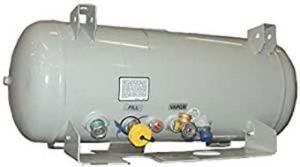 ASME tanks, or permanently mounted tanks, come in a variety of sizes – from 20 to 40 pounds. They must be filled by a qualified technician and are most commonly used for RVs with a permanent kitchen installation. They are often mounted on your motorhome’s chassis. The tank sits horizontally, and this usually comes with a built-in regulator.
ASME tanks, or permanently mounted tanks, come in a variety of sizes – from 20 to 40 pounds. They must be filled by a qualified technician and are most commonly used for RVs with a permanent kitchen installation. They are often mounted on your motorhome’s chassis. The tank sits horizontally, and this usually comes with a built-in regulator.
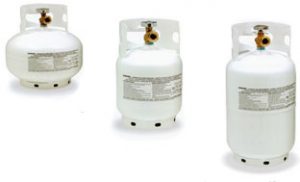 DOT Cylinders
DOT Cylinders
On the other hand, DOT cylinders or portable tanks are moveable and sit vertically. Similar to the ASME tank, it comes in different sizes ranging from 20 -40 pounds as well. These are commonly used for RVs with a portable kitchen setup. Because they’re not permanently mounted on the RV, this type of propane tank uses a hose and regulator to connect to the RV’s appliances.
How Long Will Your Propane Last?
There’s no easy answer when it comes to how long your propane will last. It all depends on the size of your tank, how many appliances you’re using, and how often you’re using them. For example, if you’re only using your RV’s fridge and stove sparingly, your propane may last for weeks or even months. But if you’re using your RV’s oven, furnace or take hot showers often, you may need to refill your tank more frequently.
The best way to gauge how long your propane will last is to keep track of your usage and monitor the level of your propane tank. That way, you’ll know when it’s time to refill.
Manually calculating your propane usage can be a bit of a hassle. Thankfully, there are now RV propane tank monitors that can do the job for you. These devices are designed to track your propane usage and give you an accurate reading of how much propane is left in your tank.
There are a variety of RV propane tank monitors available on the market, so be sure to do your research before you buy.
ASME tanks have a built-in gauge that will tell you how much propane is left in the tank. DOT cylinders do not have a gauge, so you’ll need to use a different type of device to monitor your level of propane.
How to Choose the Right RV Propane Tank
When you’re looking for a new propane tank for your RV, there are a few things you need to keep in mind. The first is size – you want to choose a tank that will fit comfortably in your RV without taking up too much space. This is particularly for those who use DOT cylinders. You want to ensure that the tank you choose can be easily transported.
However, this also goes hand in hand with how much propane you need. If you only use your RV’s fridge and stove sparingly, a smaller tank may be all you need. But if you plan to use your RV’s oven or air conditioner often, you may need a larger tank.
The second thing to consider is the type of regulator that comes with your tank. ASME tanks have a built-in regulator, while DOT cylinders use a hose and regulator. Make sure the type of regulator you choose is compatible with the appliances in your RV.
Refilling Your RV’s Propane Tank
The best way to refill your RV’s propane tank is by visiting a local fueling station. Before you refill your propane tank, make sure to check for any leaks. Once you’ve confirmed that there are no leaks, open the valve on your RV’s propane tank and attach the fill hose. Make sure the valve is in
Most stations offer both liquid and cylinder propane, so you can choose the type of tank that works best for you.
Be sure to always refill your propane tank in a well-ventilated area and never smoke while you’re filling up. And remember to keep your tanks away from heat sources, like the sun or campfire.
It’s best practice that you fill it up to 80% capacity at most. This gives the propane room to expand, so it doesn’t put too much pressure on the tank. Doing this will also help to prevent any leaks.
Safe Practices When Filling Your Propane Tank
- Don’t overfill your tank – as mentioned, it’s best to stop at 80% capacity.
- Don’t fill your tank if it’s too hot or too cold outside. The ideal temperature for filling up is between 70-80 degrees Fahrenheit.
- Make sure the valve on your propane tank is closed before you start filling it up.
- Don’t smoke while you’re filling up your tank.
- Keep your tanks away from heat sources, like the sun or campfire.
- Store your tanks in a well-ventilated area.
- Use a propane tank monitor to track your usage and level of propane.
Is It Okay to Keep Your Tank On While Driving?
Yes, it is perfectly safe to keep your propane tank on while you’re driving. In fact, many RVers want to keep their fridge turned on during the trip. While it’s completely okay to do so, this exposes you to propane fumes and can be a safety hazard.
However, there are a few things you should keep in mind if you choose to keep your tank on while driving:
Crack a Window Open
This will help to circulate the air and prevent any propane fumes from building up inside your RV. Whenever possible, open a window on the side of the RV that’s opposite to where the tank is stored.
Keep Your Tank in a Well-Ventilated Area
If you’re not using your fridge or any other appliances that run on propane, turn them off. This will help to prevent any fumes from building up inside your RV.
Monitor Your Propane Levels
It’s important to keep an eye on your propane levels, especially if you’re using your fridge and other appliances while driving. If you start to run low on propane, pull over and refill your tank as soon as possible.
Be Aware of Your Surroundings
Keep an eye out for any areas where you could potentially have a fire, like dry grass or leaves. If you see any potential hazards, avoid them.
Do a Leak Test Before Setting Off
Before you start driving, it’s always a good idea to do a leak test. This will help to ensure that your propane system is functioning properly and there are no leaks.
To do a leak test, simply spray soapy water on all the fittings and connections of your propane system. If there are any leaks, you’ll see bubbles form. Never drive with a propane leak. As soon as you see bubbles, turn off your tank and fix the problem.
Know What to do in an Emergency
If you smell gas or see flames, pull over immediately. Turn off your propane tank and all appliances that run on propane. If you can, get out of the RV and away from the area. Then, call for help. Make sure that you always have a fire extinguisher on hand, just in case.
Using Propane Tank Covers
When you are not using your RV, it is important to protect the propane tank from weathering. One way to do this is by using a propane tank cover. This will keep rain and snow from building up on top of the tank, causing damage. Tank covers are often made from durable materials like vinyl or canvas and can be easily installed.
Another way to protect your tank is by keeping the area around it clear of any debris. This will help airflow and prevent any fires from starting. If you’re using DOT cylinders, bear in mind that they must be located at least five feet from any heat source.
Cleaning the Tank and Hoses
It’s essential to clean your propane tank and hoses on a regular basis. This will help keep them functioning properly and prevent any gas leaks. The best way to clean the tank is by using a mild detergent and water. Be sure to rinse it thoroughly afterward.
To clean the hoses, use a soft brush and mild detergent. Rinse them well with water and allow them to air dry. Make sure to perform an inspection after each cleaning session to ensure that there are no cracks or leaks.
Conclusion
RV propane tanks are a safe and convenient way to power your RV. However, there are a few things you should keep in mind when using them. Be sure to monitor your usage, clean the tank and hoses regularly, and always be aware of your surroundings. By following these tips, you can enjoy worry-free RVing with peace of mind.


